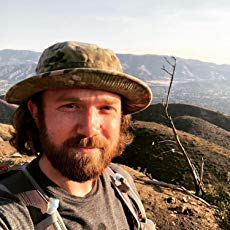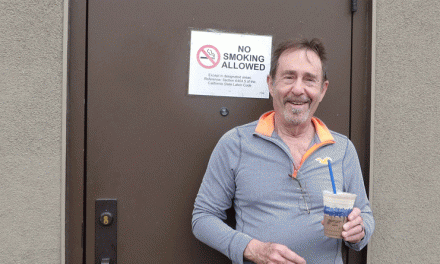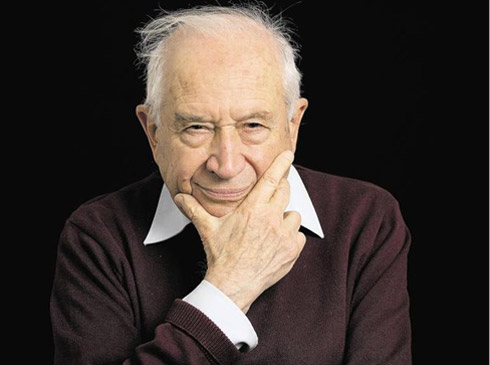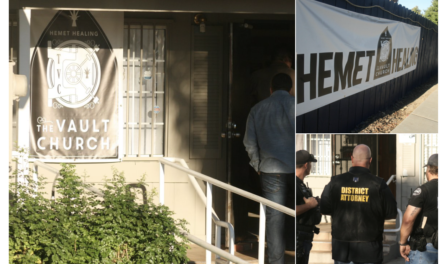By O’Shaughnessy’s News Service
Early in 2011 attorney Zenia Gilg took on a client named Brian Pickard who had been growing marijuana in California for a collective. The federal government had charged Pickard (and 14 co-defendants, most of whom he had no association with) with cultivation crimes carrying mandatory minimum sentences. The case was called U.S. v. Schweder et al.
Gilg had been defending marijuana providers for nearly two decades. “I was getting tired of not being allowed to argue ‘medical use’ in federal court,” she says.
With co-counsel Heather Burke, Gilg drafted a motion asking the US Attorney for the Eastern District of California to dismiss charges on the grounds that the statute Pickard allegedly violated —the federal Controlled Substances Act, which defines marijuana as a dangerous drug of no medical value by placing it on Schedule 1—violates his rights under the 5th and 10th Amendments of the U.S. Constitution. The motion asked that a hearing be held to weigh the revelant evidence.
US District Judge Kimberly J. Mueller, an Obama appointee, agreed to hold an evidentiary hearing. The defense, aided by Paul Armentano of NORML, lined up, as expert witnesses Philip A. Denney, MD, a former president of the Society of Cannabis Clinicians; Greg Carter, MD, a specialist in neurodegenerative diseases; Dr. Carl Hart, a Columbia University neuroscientist; and Dr. James Nolan, a sociology professor with a background in law enforcement. Also, as precipient witnesses testifying to the health benefits of cannabis in their own lives, nurse Jennie Stormes, whose son Jackson has Dravet Syndrome, and Sgt. Ryan Begin, an Iraq combat vet dealing with PTSD.
In July 2014 they and the government’s expert witness, Dr. Bertha Madras, filed written declarations, and in October, with the exception of Nolan, they were cross examined in front of Judge Mueller in Sacramento. (Carter, who practices in Spokane, appeared by video.)
Nolan’s testimony had been excluded by the judge because it was deemed sociological rather than medical or scientific in nature. Gilg saw this as an omen that Mueller would only be looking at one narrow issue —“Did Congress have a conceivable rational basis for keeping marijuana on Schedule 1?”— instead of the broader context in which federal policies are allowing production and distribution for medical use.
Carl Hart had come to Sacramento from New York, where he runs a lab at Columbia —one of the few authorized by DEA to do human-subject trials with NIDA-supplied cannabis. In an experiment Hart recounted in his declaration, “Patients consuming Dronabinol (synthetic THC, also known as Marinol) “consumed some eight times the current FDA recommended dose in order to achieve the same effect as smoking whole-plant cannabis.”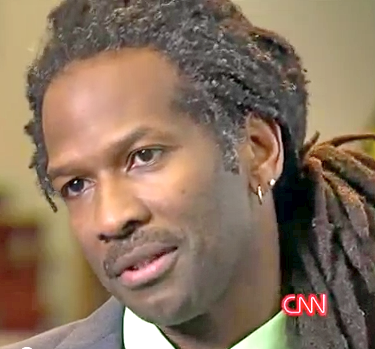
Hart described a double-blinded, placebo-controlled experiment conducted in 2007 in which cognitive function was measured by means of a “gambling task.” For experienced marijuana users, smoking a 3.7% THC joint did not affect accuracy, although it did take them a little longer to complete the task. A similar experiment in 2010 yielded the same result.
Regarding addiction potential, Hart declared: “symptoms of marijuana withdrawal are relatively minor when compared to withdrawal symptoms experienced by those discontinuing use of other substances, including alcohol, many prescription medications and opioids.
Hart criticized the methodology of several well-publicized studies attributing harm to cannabis. One, based on a single MRI brain image, was conducted by colleagues of Bertha Madras’ at Harvard Medical School. The researchers warned of cannabis causing “exposure-dependent alterations of the neural matrix of core reward structures.”
Hart declared: “The multiple limitations of that study should have precluded such speculation… The researchers did not assess any behavior in that study, making it impossible to determine the meaning of any brain differences between the groups.”
(In the 19th century a pseudoscience called “Phrenology” flourished. It was thought that certain areas of the brain controlled certain aspects of personality and intellect, and that the relative sizes of this area could be determined by measuring the skull. Drawing conclusions of cognitive damage or addiction based on changes in the brain —without reference to behavior— is 21st century Phrenology. Hart put it more diplomatically.)
More than once Broderick referred to Hart’s “opinion” and the witness had to put in, “It’s not my opinion. It’s what the evidence indicates.”
Assistant US Attorney Gary Broderick implied that Hart was biased because members of his family had run afoul of the drug laws. Hart responded, “I’m a black man in America. You’d be hard pressed to find someone like me who isn’t closely connected to someone” who has had dealings with the criminal justice system.
More than once Broderick referred to Hart’s “opinion” and the witness had to put in, “It’s not my opinion. It’s what the evidence indicates.”
Hart quoted the common-sense line in the Institute of Medicine Report of 1999: “Although few marijuana users develop dependence, some do. But they appear to be less likely to do so than users of other drugs (including alcohol and nicotine), and marijuana dependence appears to be less severe than dependence on other drugs.” Hart said this jibed with results observed in his lab.
He cited a survey documenting that “cannabis’ dependence liability was by far the lowest of the substances studied: nicotine (32%), alcohol (22.7%) cocaine (20.9%) and cannabis 8.9%).”
He also cited NIDA’s acknowledgement in June 2014 that “marijuana has a medical use in treating glaucoma, nausea, AIDS-associated anorexia and wasting syndrome, chronic pain, inflammation, multiple sclerosis, and epilepsy.”
Although the prosecution’s sole witness, Dr. Bertha Madras, is not a medical doctor, Broderick pointed out that Hart does not have an MD. Hart, whose PhD is in neuropsychopharmacology, shot back: “I teach at Columbia’s medical school. I train doctors.”
Hart’s declaration concluded: “The therapeutic use of cannabis has been embraced not only by private physicians, and scientific researchers, but also by the government researchers whose primary responsibility is to bring the power of science to bear on this country’s drug abuse prevention policy.”
Next up was Phil Denney. It turned out that the prosecutor questioning him had graduated from the same high school as Denney in Hyattsville, Maryland (five years later) and his tone towards his fellow Northwestern Wildcat was congenial.
“Poor Brian Pickard can’t understand how we can be friendly with these people,” Denney commented afterwards. “Zenia is very congenial. Her attitude is ‘no reason to make enemies with them.’”
Denney, 66, had been a family practitioner for more than two decades when he opened a cannabis-focused office in Loomis, west of Sacramento in 1999. In 2004, with Robert Sullivan, MD, Denney opened an office in Lake Forest, breaking the so-called Orange (County) Curtain, and then an office in Redding. Now semi-retired in Hawaii, Denney has monitored cannabis use by more than 12,000 patients, and stays abreast of the relevant science.
Denney was no stranger to the witness stand, having testified in 28 of California counnties on behalf of patients. He described the content of his cross examination as “the same old thing —I’m a potdoc, I’m doing this for money, I give recommendations to everyone, medical marijuana is a sham.”
Denney’s declaration had focused on factors that should logically determine a scheduling decision, notably the drug’s therapeutic index (the ratio of a toxic dose to a therapeutic dose) and the risk of side effects. Tylenol was Denney’s prime example of a drug sold over the counter that is far more dangerous than cannabis.
“Significantly,” according to Denney, “acetaminophen hepatotoxicity is the most common cause of acute liver failure in the United States, and results in more calls to poison control centers than the overdose of any other pharmacological substance. Even if treated, an overdose can lead to liver failure within days. While the most important toxic effect of acetaminophen is hepatic necrosis leading to liver failure after an overdose, there are also reported cases of renal failure after overdose.
“On January 14, 2014, the FDA issued a recommendation to health care professionals to discontinue prescription combination drug products with more than 325 mg of acetaminophen in order to protect consumers from liver damage. In April of 2014, the FDA had to ‘remind’ health care professionals to stop dispensing prescription combination drug products with more than 325 mg of acetaminophen because they were “no longer considered safe by the FDA.” Gilg’s “Equal Protection” argument in the motion to dismiss contrasted the federal government’s disparate treatment of citizens like Brian Pickard who produce marijuana and the producers of “other substances [Tylenol, for example] which are legally distributed in the open market.”
The declaration of the government’s expert witness, Bertha Madras, cited the definition of “Marijuana Use Disorder” in the Diagnostic and Statistical Manual of Mental Disorders, published by the American Psychiatric Society —a book that streamlines medical billing by assigning a number to every mental and emotional disorder. The current edition, being the fifth, is called DSM-V.
“When I read the DSM-V definition of a ‘substance use disorder,’” says Denney, “ I took it to mean that if a patient is using cannabis for a legitimate medical condition, then the issues with tolerance and withdrawal do not indicate a substance abuse disorder.
“I also could have pointed out that it wasn’t that long ago that the DSM defined homosexuality as a disorder,” Denney said. “There’s always something you think of afterwards.”
“Marijuana treatment may require billions of dollars in treatment needs nationally.” —Bertha Madras
Bertha Madras, the government expert, is a professor of Psychobiology in the Psychiatry department at Harvard Medical School. Her declaration against Pickard provided five pages of self-description, revealing some institutional sinews of the beast that is the Drug War. Madras cited the fact that many adolescents are in treatment for a “marijuana use disorder” as proof that there is such a disorder. To quote her declaration:
“Marijuana is the most widely used illicit substance in the United States, and more Americans (4.3 million) harbor a medical (DSM-IV) diagnosis of marijuana abuse/addiction than any other illicit drug. Many more youth are DSM-IV positive for a marijuana use disorder than for an alcohol use disorder, as a percentage of those in treatment. Treatment admissions for youth aged 15 to 17 most frequently reported marijuana (71.9 %) or alcohol (17.7%) as their primary substance of abuse…
No wonder the addiction specialists are so dependent on marijuana!
“Marijuana treatment may require billions of dollars in treatment needs nationally. (Sic the garbled sentence. The prospect apparently got Madras overexcited.) Although treatment admissions for alcoholism and cocaine addiction declined between 1992 and 2007, marijuana use disorder admissions climbed significantly during the same period. Similarly, emergency department mentions have also increased significantly between 2004 and 2008.”
No wonder the addiction specialists are so dependent on marijuana! (BTW, in most “emergency department mentions” of marijuana, the ER visitor had been using alcohol and/or other drugs.)
On April 17, 2014, Judge Mueller denied the motion to dismiss charges against Brian Pickard et al. The ruling, Gilg said in a subsequent interview, “was based on the fact that Dr. Madras testified that there’s a high potential for abuse and no accepted use under medical supervision. And if such an expert said so, Congress could believe her.
“I respect Judge Mueller for allowing us to present the evidence,” Gilg said, “but let’s face it: the Flat Earth Society has a conceivable basis to believe that the earth is flat. You look at the horizon and it falls off.”
Gilg’ second argument involved “Equal Sovereignity.” As per Article 6 of the Tenth Amendment, the federal government is supposed to treat all the states the same. But in a series of actions —starting with the August 2013 memo by Deputy Attorney General James Cole— the federal government has adopted a different approach to law enforcement in states that have medical marijuana programs
From Zenia Gilg’s motion to dismiss the indictment in US v. Schweder et al:
“The challenged statute violates defendant’s right to Equal Protection as guaranteed by the Constitution’s Fifth Amendment.The scientific studies on the use of cannabis demands a finding that the scheduling of marijuana is overinclusive when viewed in light of the factors enumerated in 21 U.S.C. § 812, and further that when compared to other substances which are legally distributed in the open market cannabis is proven to be far less harmful, and thus its continued prohibition serves no Government interest. The inclusion, therefore, of marijuana and THC in Schedule I of the Controlled Substances Act is based on an arbitrary classification in violation of Equal Protection Clause of the Fifth Amendment. United States v. Carolene Prods. Co., 304 U.S. 144 (1938).
The policy statement presented in the Memorandum to U.S. Attorneys from Deputy Attorney General James Cole, issued on August 29, 2013, by Attorney General Eric Holder has resulted in a discriminatory application of federal law, in that it protects similarly situated individuals from criminal sanctions for actions identical to that alleged to have been conducted by the defendant, and thereby violates the Equal Protection Clause. Oyler v. Boles, 368 U.S. 448 (1962).
- The Government’s prosecution policy announced on August 29, 2013, as it relates to marijuana and THC violates the doctrine of Equal Sovereignty by adopting a scheme which allows for the distribution of marijuana in States where it has been decriminalized for medical or recreational use, while exposing those in other states to serious criminal sanctions. A federal law’s disparate geographic application requires the current burdens of disparate treatment between the states be justified by current needs, and the imposition on the equal sovereignty is limited to remedy present-day “local evils.”
Further, an imposition upon the sovereignty of the States must be applied strictly as an “extraordinary measure” that should only be applied to remedy an “extraordinary problem.” The defense contends that the Government will be unable to justify this disparate geographic coverage. Accordingly, the statute which criminalizes the distribution of marijuana and THC must be found to violate Article VI and the Tenth Amendment of the United States Constitution. Shelby County (Alabama) v. Holder.
Gilg interviewed in June 2015.
O’Shaughnessy’s: Phil Denney said you’re about to file a similar motion in Iowa.
Gilg: True. We also filed in Indiana and Nebraska. We filed this motion in Kansas and Minnesota and were denied evidentiary hearings.
O’S: Do you have colleagues in other states who know that you’ve drafted a novel argument and bring you in on a case?
Gilg: Most of my clients were Californians who got in trouble in other states. The argument really doesn’t rely on the medical defense, because it’s a direct challenge to the constitutionality of the statute. In some instances the US Attorneys have backed off on their charges. In Wisconsin, the offer from the US Attorney went from two years in federal prison to two years probation.
O’S: The threat of having to defend the validity of Schedule 1 led them to back off?
Gilg: I also had to discuss my client and give her background. We had another good outcome in Kansas. Before the decision came out from the magistrate we got a really good offer…
Judge Mueller limited her analysis to the medical and scientific evidence, rather than taking a broader view and deciding “What does Schedule 1 mean in the context of the way that the Congress is behaving. Is it rational for Congress to believe that marijuana belongs on Schedule 1? They clearly don’t believe that because they passed a law saying ‘let’s let the states distribute it.’ I mean, that’s the bottom line.
O’S: What’s the name of the Iowa case?
Gilg: It’s United States vs. McDonald —a young man alleged to have been involved in a conspiracy to distribute marijuana in 2010.
We now have so much more to support our Equal Sovereignity argument than we did when we initially filed papers in 2013. Then all we had was the Cole memo. Subsequent to that there was the DOJ and Treasury Department memos relating to banks accepting money from recreational and medical distributors. (When my clients do it it’s called money laundering.)
There was the DOJ memo allowing Native Americans to grow marijuana.
Congress passed a bill defunding DOJ from taking action against the states for distributing medical marijuana. They call it “medical marijuana” in the appropriations bill! They can’t have it both ways.
We also have a venue motion pending in the Iowa court. Marijuana is alleged to have been going from California to New Jersey. Iowa took the case because there was evidence that somebody drove through and stopped ovenight in Iowa. There’s no corroborating evidence. It’s all an informant case against my client. I’m representing him together with a local attorney, Alfred Willett.
If you take out what the goverment has been doing starting with the Cole memo, if you just consider “could Congress believe this is a dangerous drug?” The answer is yes. There are respected experts like Bertha Madras who say you can never have a whole plant medicine. And Congress can believe that.
But the Appropriations Bill, 538, showed that Congress does not believe that. They could, but they didn’t.
My clients are looking at mandatory minimums. Brian Pickard is a wonderful man with a beautiful family. They tried to connect him with defendants he had nothing to do with —despite the fact that they know he was part of a collective. I’m a criminal defense attorney and my client is my sole concern. My heart was broken.
O’S: What percentage of your cases nowadays involve allegations of transportation out of California.
Gilg (after a thoughtful pause): Probably over half.
O’S: Wow.

